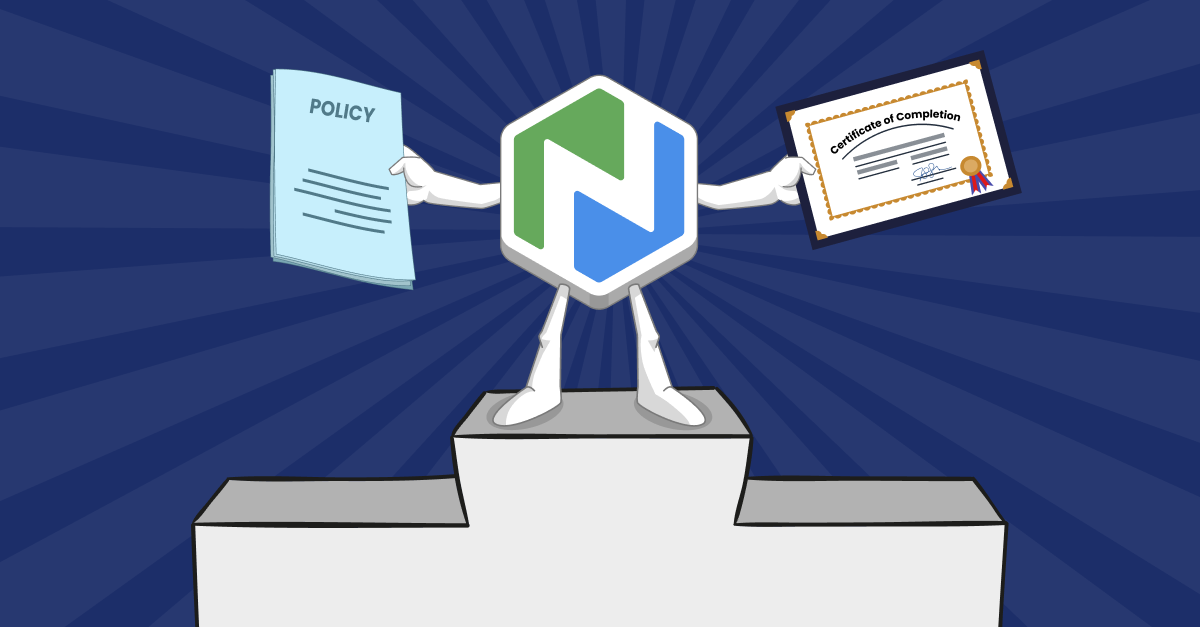A Simple Framework for Better Employee Onboarding
Learn how to design an effective onboarding process to boost employee engagement, retention, and productivity by following 6 basic steps.

Imagine a new hire, let’s call her Sarah, starting her first day at a promising new company. Her heart is racing with excitement and nerves. The next few hours and days will set the tone for her entire employee experience.
Fortunately, Sarah’s new company has a thoughtful and comprehensive onboarding program. She’s warmly greeted by her manager and introduced to a structured training plan that will guide her through her first few months. The day begins with a well-organized orientation, where she learns about the company’s history, values, and culture.
Over the next few weeks, Sarah participates in interactive training sessions, meets key team members, and is paired with a mentor who helps her navigate her new role. She feels supported, valued, and increasingly confident in her abilities. By the end of her first quarter, Sarah is integrated into her team, contributing innovative ideas, and exceeding her initial performance goals.
The Price of Poor Onboarding
Not all new hires are as fortunate as Sarah. Starting a new job should be exciting, but a poor onboarding experience can quickly turn that excitement into frustration.
A recent Paychex survey found that 52% of new hires feel under-trained after onboarding, with even higher rates for employees at small companies (66%) and remote workers (63%).
This gap in training doesn’t just affect morale—it has real consequences for businesses. Another report indicates that 51% of employees would go “above and beyond” in their work if they had a positive onboarding experience. Conversely, inadequate onboarding can lead to disengagement, which according to Gallup costs businesses roughly 18% of an employee’s salary.
Perhaps most alarming is the impact on retention. When onboarding fails to meet the expectations of a new hire, the next step for many employees is to leave. In fact, half of newly hired employees consider leaving their jobs, and this number soars to 80% for those feeling under-trained due to poor onboarding. According to a recent article in Fortune, 80% of new hires who receive poor onboarding plan to quit—especially if they’re remote workers.
Despite the clear importance of effective onboarding, many organizations struggle to get it right. Paychex recently revealed that only 52% of new hires feel satisfied with their onboarding experience, with 32% finding it confusing and 22% disorganized. The challenge is even greater for remote workers, with 36% reporting a confusing onboarding process.
Effective onboarding isn’t just a bonus—it’s a strategic necessity for building a thriving workplace culture
These findings highlight a crucial point: effective onboarding isn’t just a bonus—it’s a strategic necessity for building a thriving workplace culture. When you onboard new hires well, you’re not just welcoming them; you’re setting the stage for a motivated and productive workforce. Giving careful attention to an onboarding strategy can provide organizations a significant edge in employee satisfaction, productivity, and retention.
In this article, we’ll explore how onboarding training enhances organizational health, employee engagement, and overall productivity. We’ll dive into the common challenges companies face and share strategies for designing onboarding training that sets new hires up for long-term success.
Onboarding vs. Orientation: What’s the Difference?
While both orientation and onboarding aim to integrate new hires, they serve distinct purposes:
- Orientation is a point in time—typically a week-long introduction that provides a broad overview of the organization and ensures all necessary paperwork and logistics are properly in place.
- Onboarding is a journey—an ongoing process that fulfills the promises you made during recruitment and prepares employees to be high performers. Gallup shares that onboarding is a foundational part of your employee experience. When it goes well, employees feel a sense of belonging and learn what defines their success.
Despite their differences in duration and depth, both programs share a common goal: to create a sense of belonging and prepare new hires to contribute effectively from day one.
5 Key Benefits of Effective Onboarding
Effective onboarding does more than check a box—it lays the foundation for long-term success. Here are five key benefits:
- Improved Employee Engagement: When new hires feel supported, valued, and equipped to succeed, they’re much more likely to be engaged in their work. Onboarding training sets clear expectations, provides the necessary resources, and fosters a sense of belonging—all proven drivers of employee engagement. In fact, according to Bamboo HR, 89% of employees report being engaged at work following an effective onboarding experience.
- Increased Retention: The first few months on the job are critical for retaining new talent. SHRM cites a Click Boarding study that found employees are 58% more likely to stay with a company for three years if they have a structured onboarding experience. Giving new hires the tools and support they need to thrive can significantly improve retention.
- Enhanced Job Satisfaction: When new employees feel well-prepared and supported, they’re more likely to be satisfied with their roles and the company as a whole. Gallup found that 70% of employees who had exceptional onboarding experiences say they have “the best possible job”. These same employees are also 2.6 times as likely to be extremely satisfied with their workplace—and consequently, far more likely to stay.
- Accelerated Time-to-Productivity: According to the SHRM Employee Onboarding Guide, an effective onboarding program can help new hires become productive team members, shaving months off their time-to-productivity. This benefits the individual and the entire organization—driving quicker ROI on new hires.
- Stronger Team Dynamics: Effective onboarding also strengthens team camaraderie. By fostering a sense of community and belonging, onboarding training can improve team collaboration and cross-functional cooperation.
If effective onboarding provides such clear benefits, why do so many organizations struggle to get it right?
Common Onboarding Challenges
Many organizations fall short when it comes to implementing effective onboarding. Common challenges include:
- Lack of Structure: Without a clearly defined onboarding program, new hires are left to navigate the process on their own. This can lead to inconsistencies, gaps in training, and a disjointed employee experience.
- Outdated Content: Onboarding materials that are not regularly updated can quickly become obsolete, failing to address evolving needs.
- Information Overload: Many organizations include too much content, overwhelming new employees with policies, procedures, and training content. A survey by Glean reports 81% of new hires often feel overwhelmed with information during their onboarding process.
- Insufficient Training Time: Rushed onboarding schedules often don’t allow enough time for new hires to fully absorb and apply the information they’re receiving.
- Poor Cultural Integration: There is a tendency to focus solely on role-specific training without addressing company culture, which falls short of helping new employees understand and adapt to their work environment.
These onboarding challenges have clear consequences. So, how can organizations overcome these obstacles and design onboarding programs that truly set new hires up for success?
Essential Onboarding Roles
Overcoming these challenges takes careful planning and execution but it doesn’t have to be difficult—especially when it’s a team effort. Here’s how different roles can contribute to an effective onboarding process:
Human Resources
- Create a smooth entry experience for new hires
- Ensure onboarding practices align with company values
- Collaborate with other departments for a well-rounded onboarding journey
- Communicate the company’s vision and values clearly
Learning and Development
- Design comprehensive training programs for role-specific and organizational knowledge
- Use training techniques for enhanced teamwork
- Create engaging, interactive learning experiences for diverse learning styles
- Measure onboarding effectiveness and track learning
Leadership
- Executive:
- Participate in meet-and-greets or welcome addresses
- Help shape a positive company culture
- Model organizational values and good communication skills
- Manager:
- Prepare clear job descriptions and performance metrics
- Outline role-specific training schedules
- Conduct regular check-ins and feedback sessions
- Pair new hires with experienced mentors
A Framework for Effective Onboarding
Now that we’ve identified essential roles, let’s look at a framework to help you create effective onboarding.
- Set Clear Goals
- Start by defining what you want to achieve:
- Fully integrate new hires into their roles and work environment
- Introduce your organization’s mission, vision, culture, policies, and procedures
- Establish a timeline (usually 1-12 months) based on job requirements
- Start by defining what you want to achieve:
- Choose the Right Platform
- Centralize all materials in one easy-to-access location
- Assign specific content to relevant employees
- Track completion and generate progress reports
- Keep content up-to-date and relevant
- Develop Engaging Content
- Think of your content as building blocks for your new hire’s success.
- Include:
- Training modules/tutorials covering essential topics
- Company policies, role-specific tasks, and professional development opportunities
- Diverse presentation methods to keep new hires engaged
- Chunk and pace the delivery of information to avoid overwhelming new hires
- Establish Support Systems
- Help new hires feel supported from day one.
- Pair each new employee with an experienced “buddy” for ongoing guidance
- Arrange informal meetings with team members and key stakeholders
- Foster Cultural Integration
- Help your new employees feel at home in your company culture.
- Include:
- Interactive scenarios demonstrating company values in action
- Learning topics on workplace equity and inclusion
- Shadowing opportunities with leaders who embody company values
- Evaluate and Improve
- Look to continually refine your onboarding process.
- Include:
- Regularly scheduled check-ins with new hires (weekly is a good start)
- Clear communication about formal and informal feedback channels
- Assessments to measure training effectiveness and job performance
- Feedback from managers and mentors to identify areas for improvement
Getting Started
Effective onboarding plays a critical role in building a thriving workplace culture. It’s an ongoing journey that takes time to perfect. To help you get started—or enhance your current onboarding process—we’ve prepared a simple checklist that walks you through the basic steps. You can add or subtract tasks to fit your specific needs.
Every step to improve your onboarding process is an investment in your organization’s future. By continually enhancing your onboarding training, you can position your organization for long-term success and create a workplace where employees like Sarah can thrive from day one.

.png)
.png)
.png)

.png)
.png)
.png)

.png)
.png)

.png)